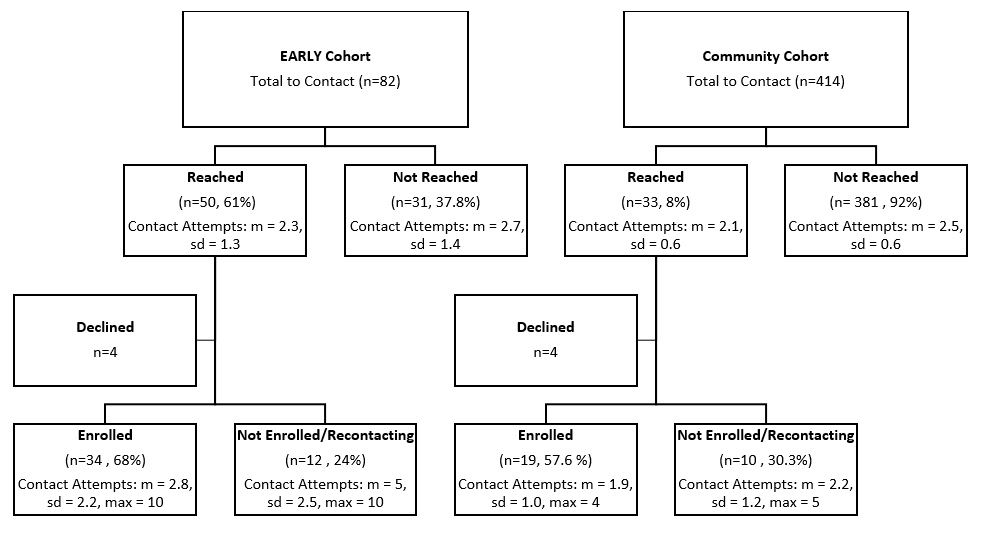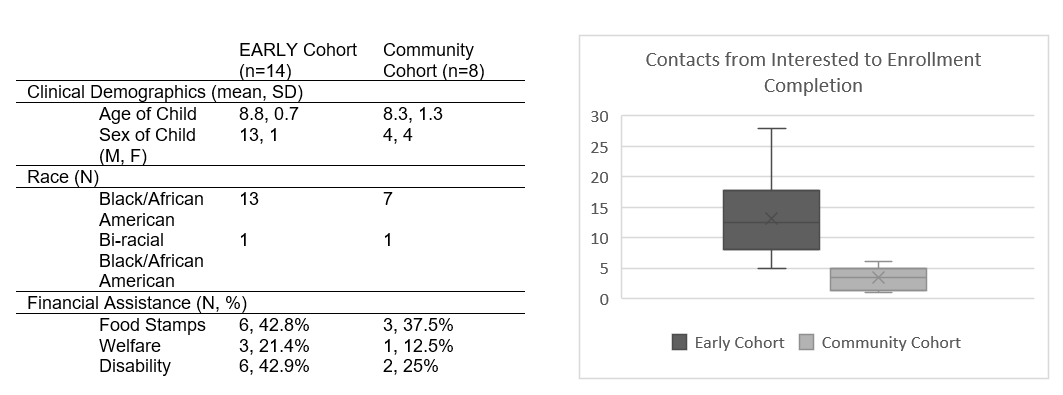Developmental and Behavioral Pediatrics
Session: Developmental and Behavioral Pediatrics 2: Autism
403 - What it Takes to Recruit Underrepresented Populations: Recruitment and Retention of Low-Resourced Black Families with an Autistic Child
Friday, May 3, 2024
5:15 PM - 7:15 PM ET
Poster Number: 403
Publication Number: 403.251
Publication Number: 403.251
.jpeg.jpg)
Sarabeth Broder-Fingert, MD, MPH (she/her/hers)
Vice Chair for Clinical Research
UMASS
Worcester , Massachusetts, United States
Presenting Author(s)
Background: Lack of representation in research is especially detrimental for Black and low-resourced families with an autistic child, who are often not represented enough to identify health disparities (Pierce et al., 2014). Previous literature has identified inaccessibility of research materials among the barriers to participation in research for Black families with an autistic child (Shaia et al., 2019). However, more is required to comprehensively explore what it takes to break these barriers down.
Objective: Identify barriers to research that exist for low-resourced Black families with an autistic child and solutions to break these barriers down.
Design/Methods: Participants were recruited at the Children’s Hospital of Philadelphia participants from a cohort of families that previously participated in Project EARLY (EARLY). This study provided early autism evaluations for low-resourced and ethnically-minoritized children who screened positive on the MCHAT (Modified Checklist for Autism in Toddlers) at a primary care visit. The current study is a follow-up to the original, recruiting families from EARLY and a comparison group, to evaluate the effects of early evaluations. This project focuses on the recruitment and retention data (i.e., number of texts, emails, calls, mailings) for the follow-up study to determine what is needed to recruit and enroll low-resourced and Black families.
Results: Recruitment efforts for both cohorts required a similar number of attempts to reach, but a larger range of attempts were made to enroll the EARLY Cohort (Figure 1). On average, more contacts were required to retain participants in the EARLY Cohort compared to the Community Sample (Figure 2). The main variance of the cohorts is the EARLY Cohort's financial needs: receiving food stamps, welfare, or disability more than the Community Cohort (Figure 2). Additionally, the research team required increased efforts by working afterhours and weekends, providing transportation to visits, and providing food and snacks for families.
Conclusion(s): There is an essential need to include families of low-resourced backgrounds in research to create representative samples and identify what barriers or disparities exist in healthcare. Increased recruitment and retention efforts required for the EARLY Cohort compared to the Community Cohort demonstrate how the added burden of financial need can impact research accessibility. Breaking down resource barriers can allow for more representation in research to impact what systemic changes are needed to create better outcomes for this population.


